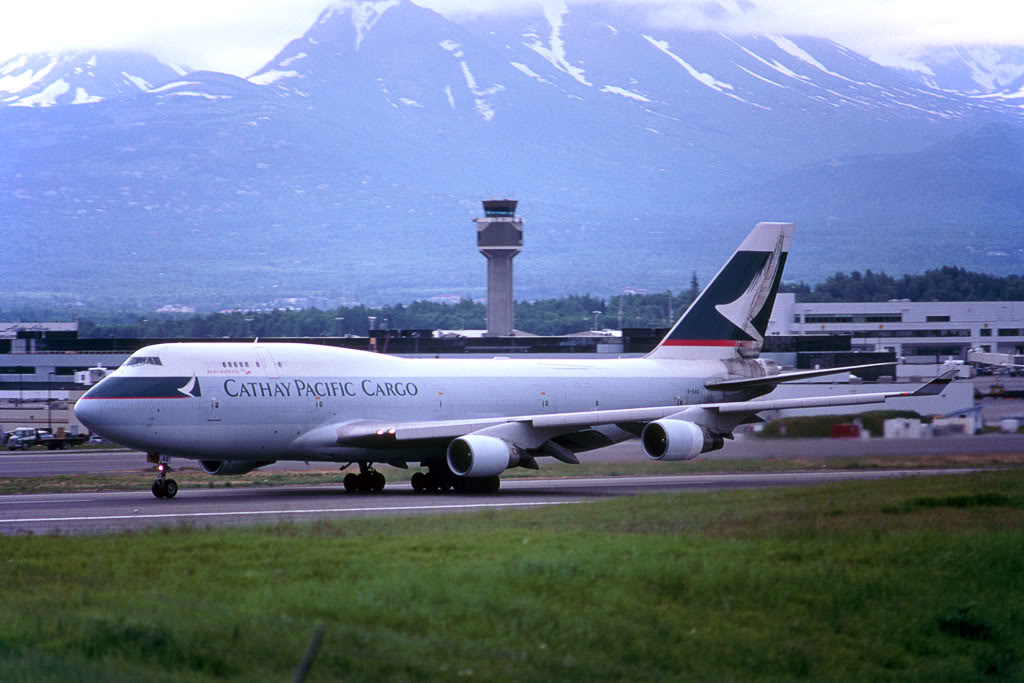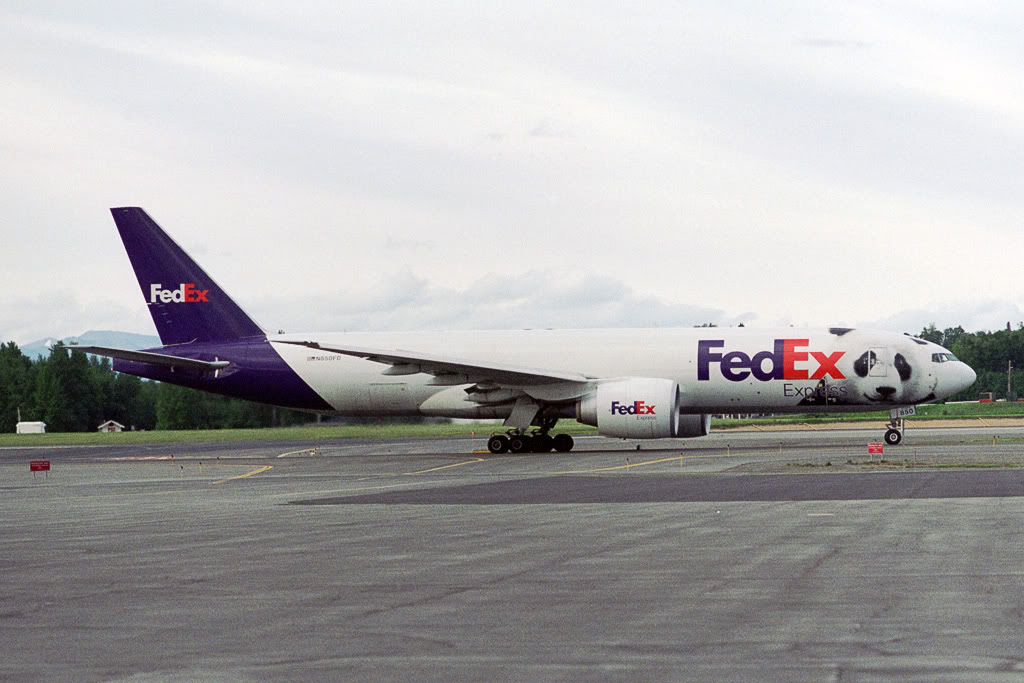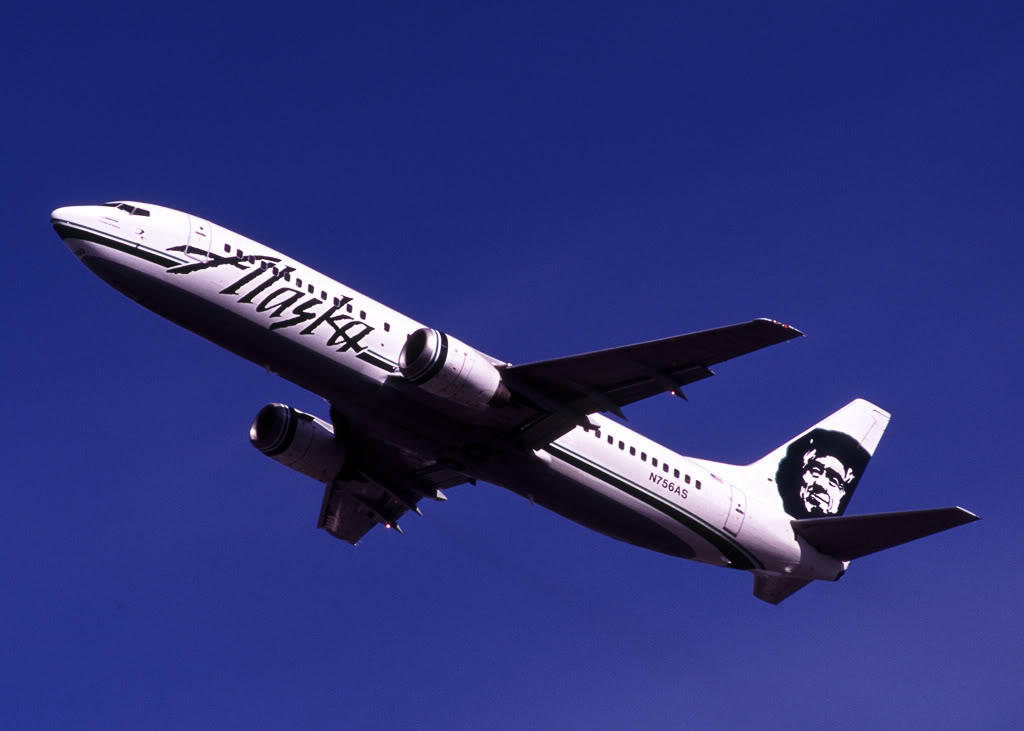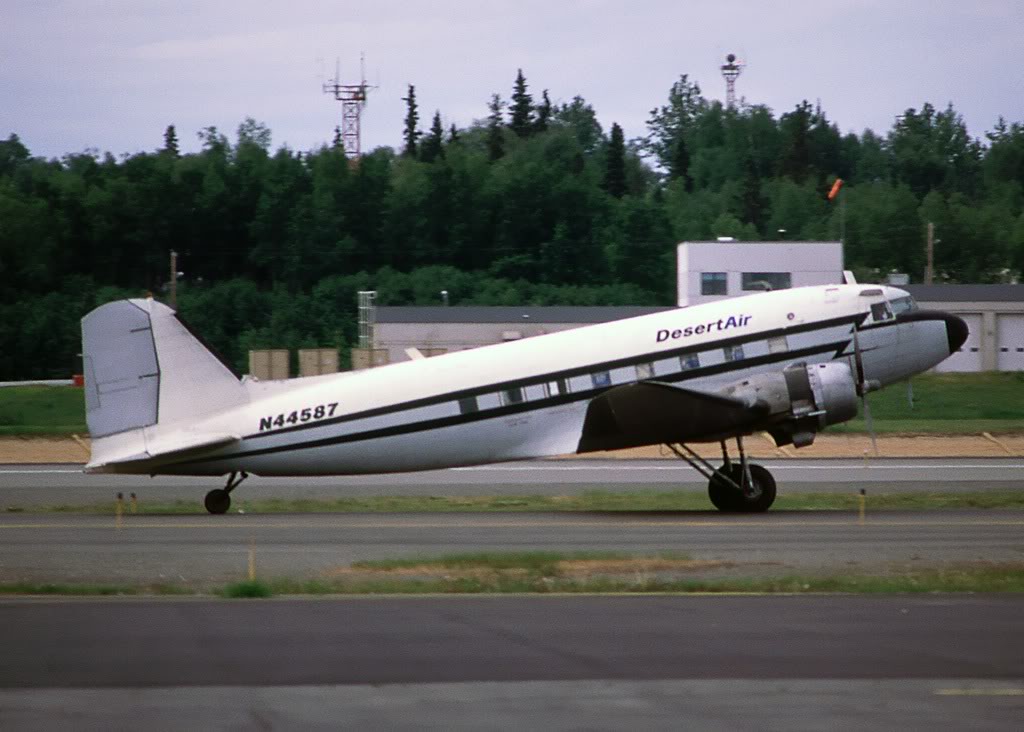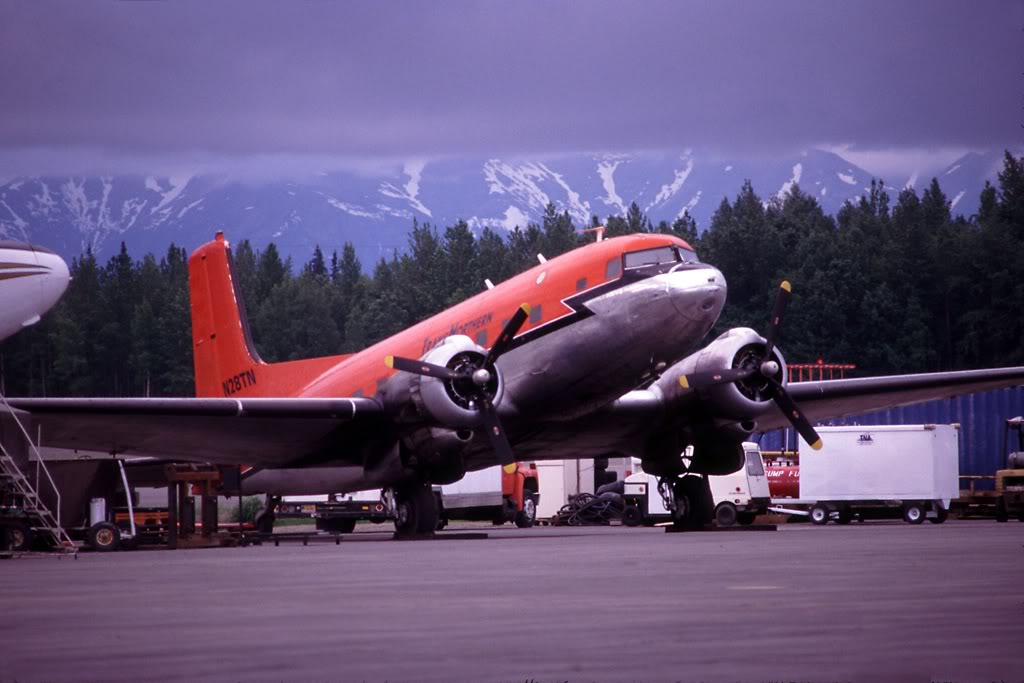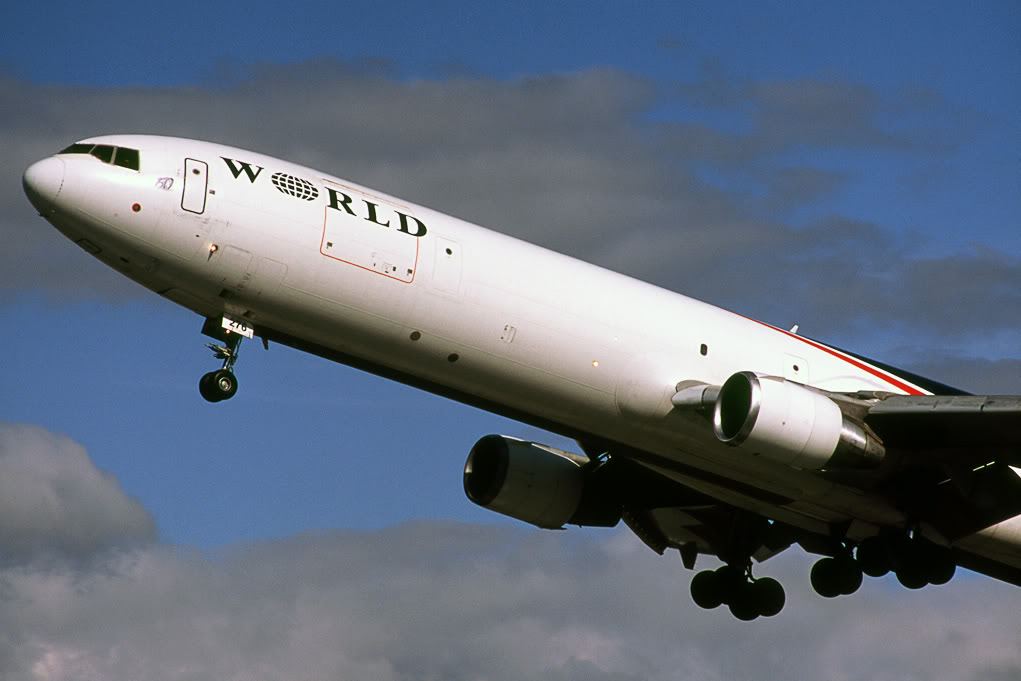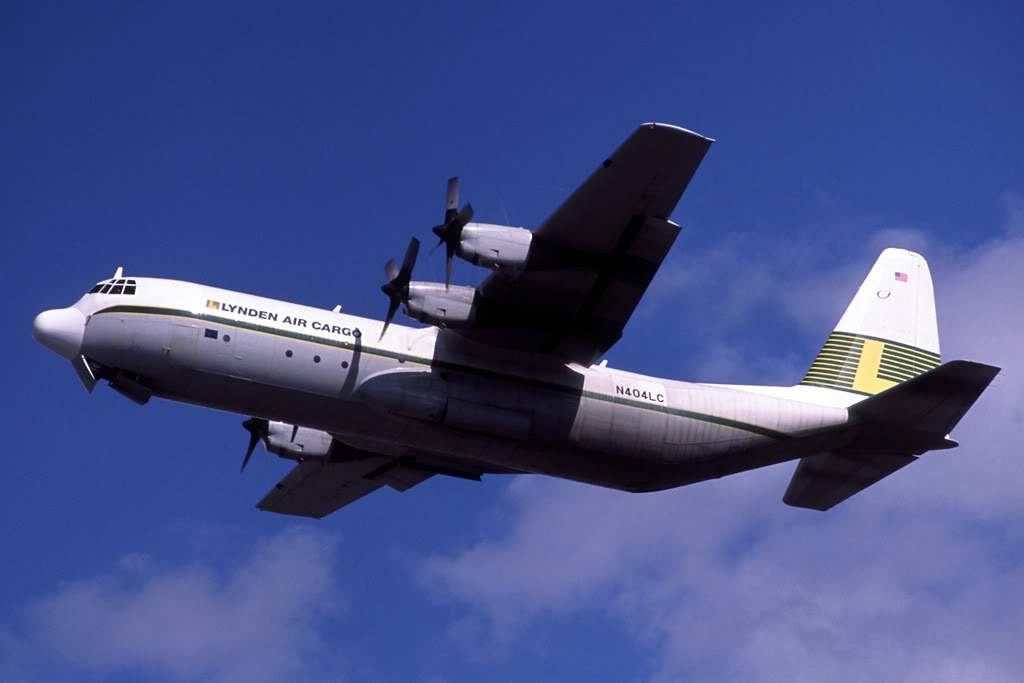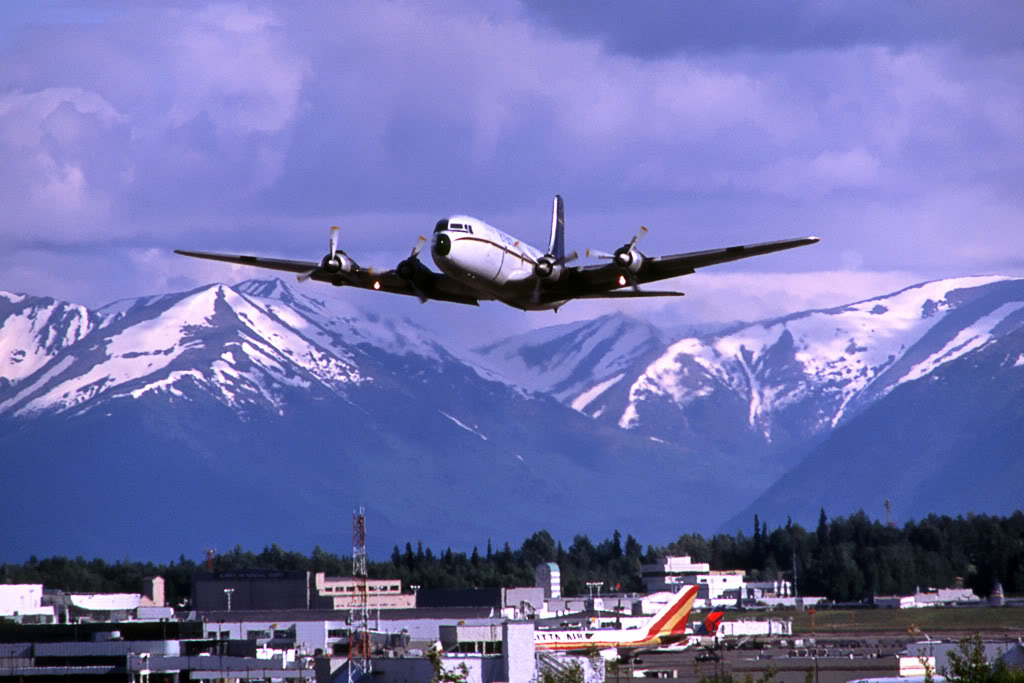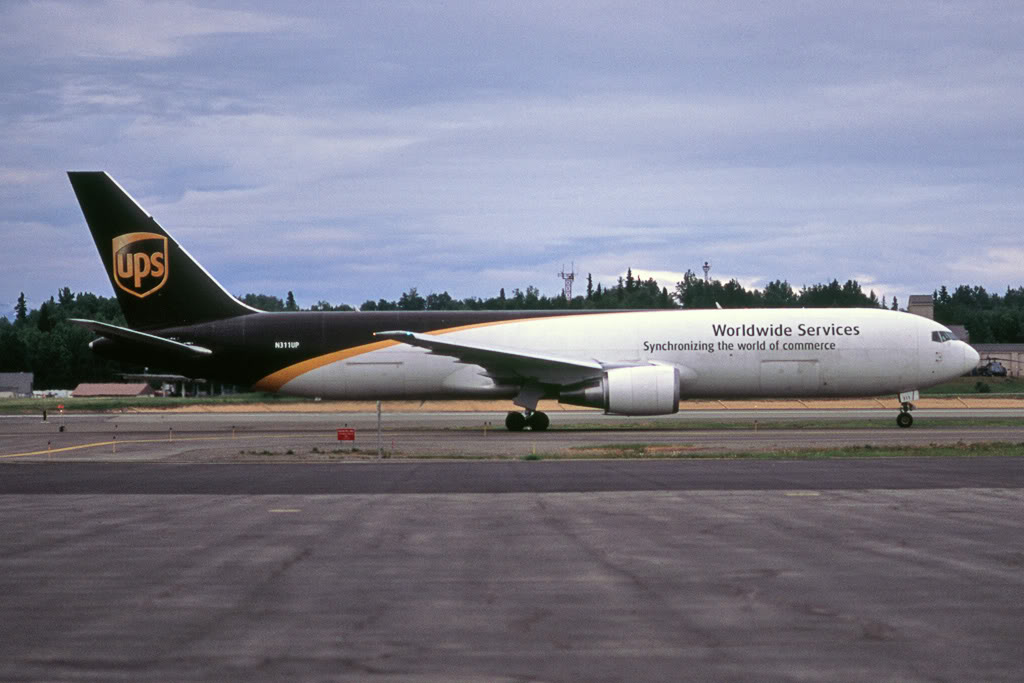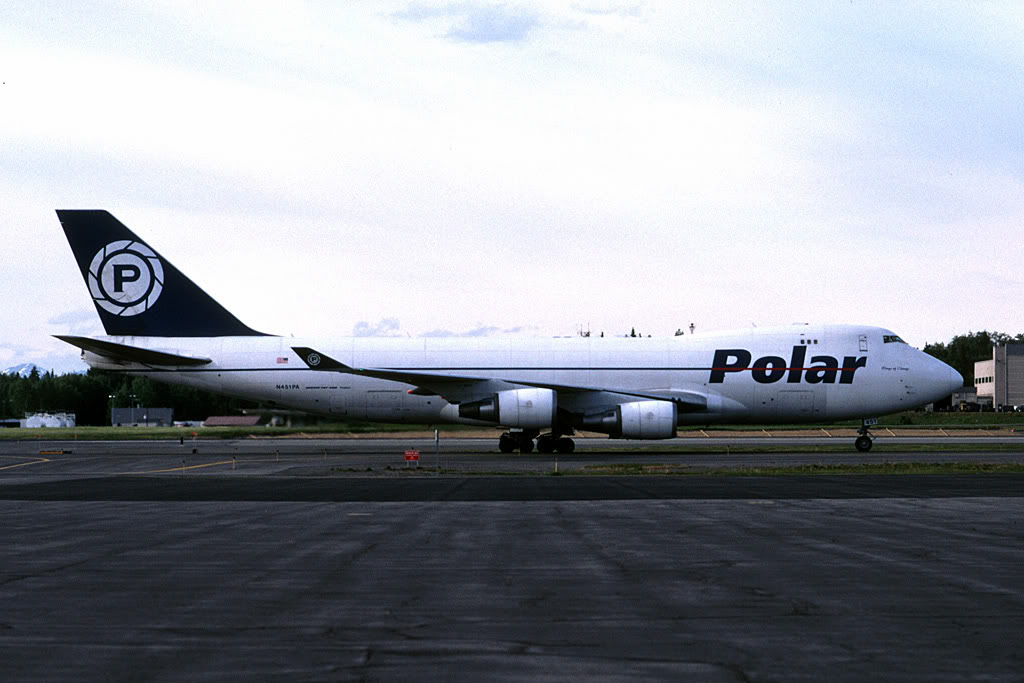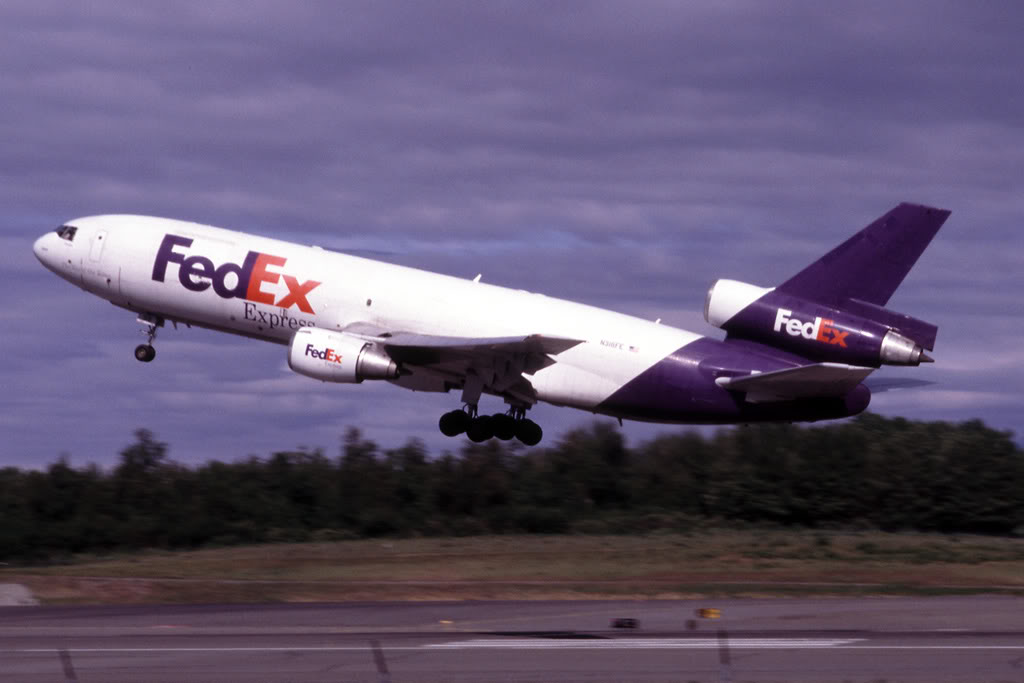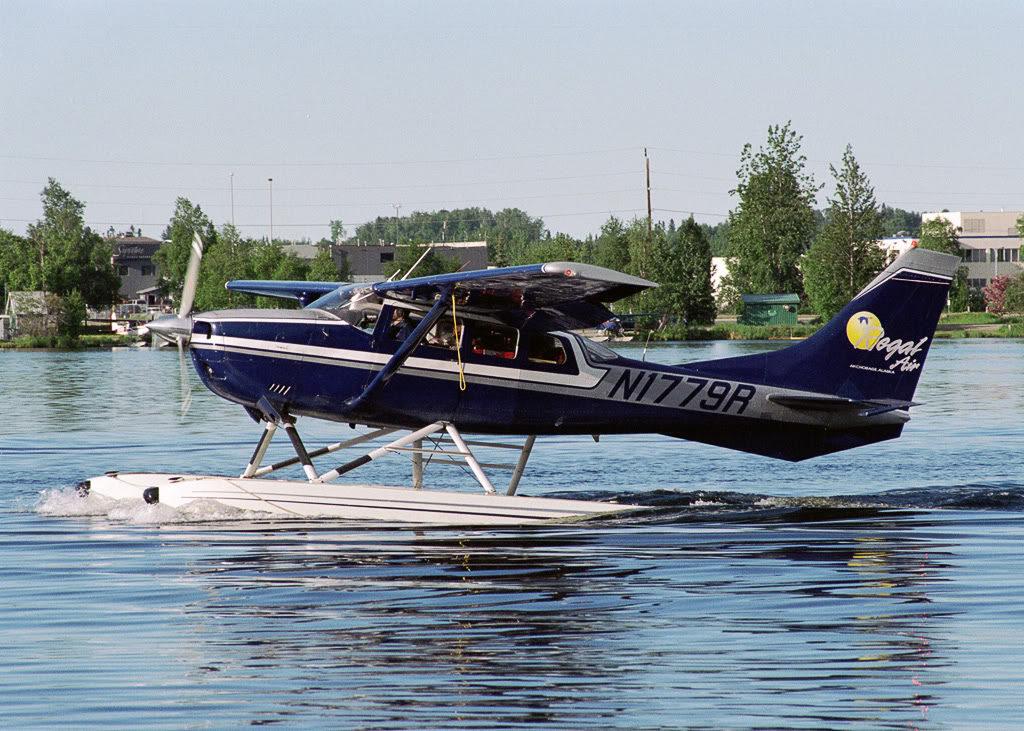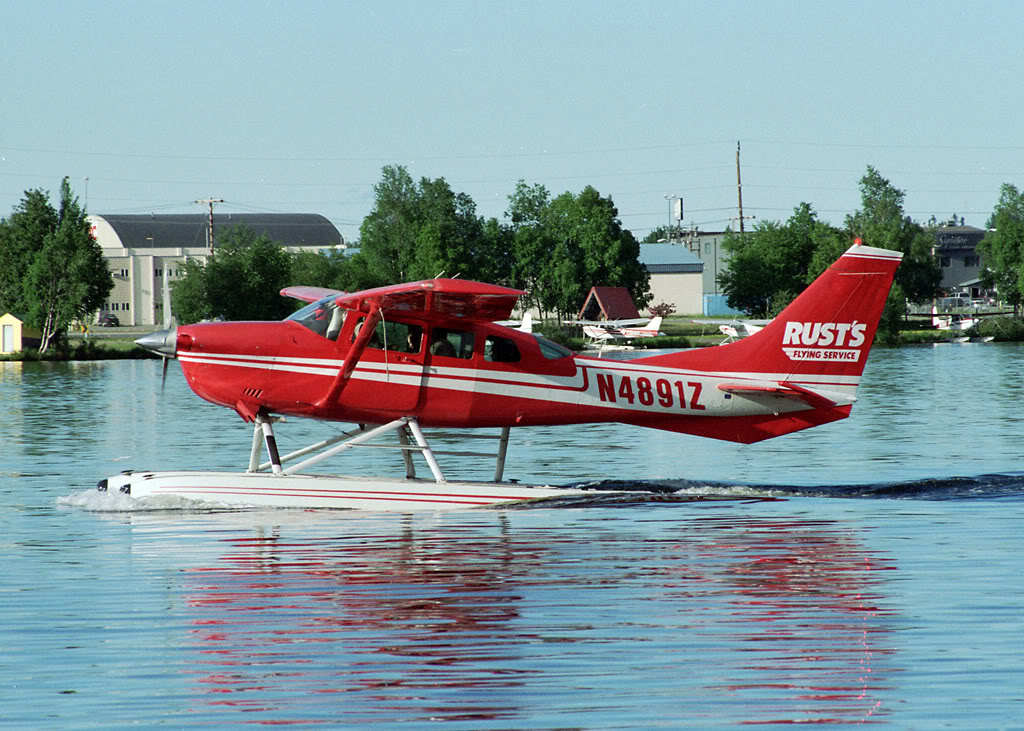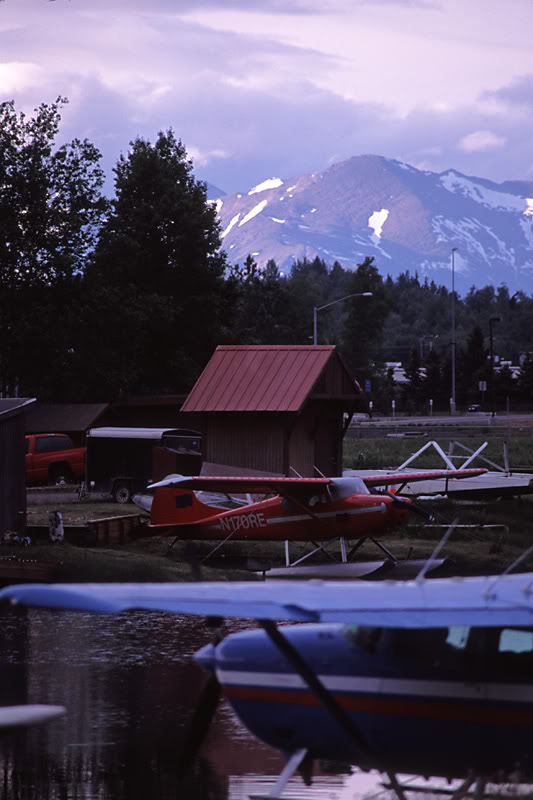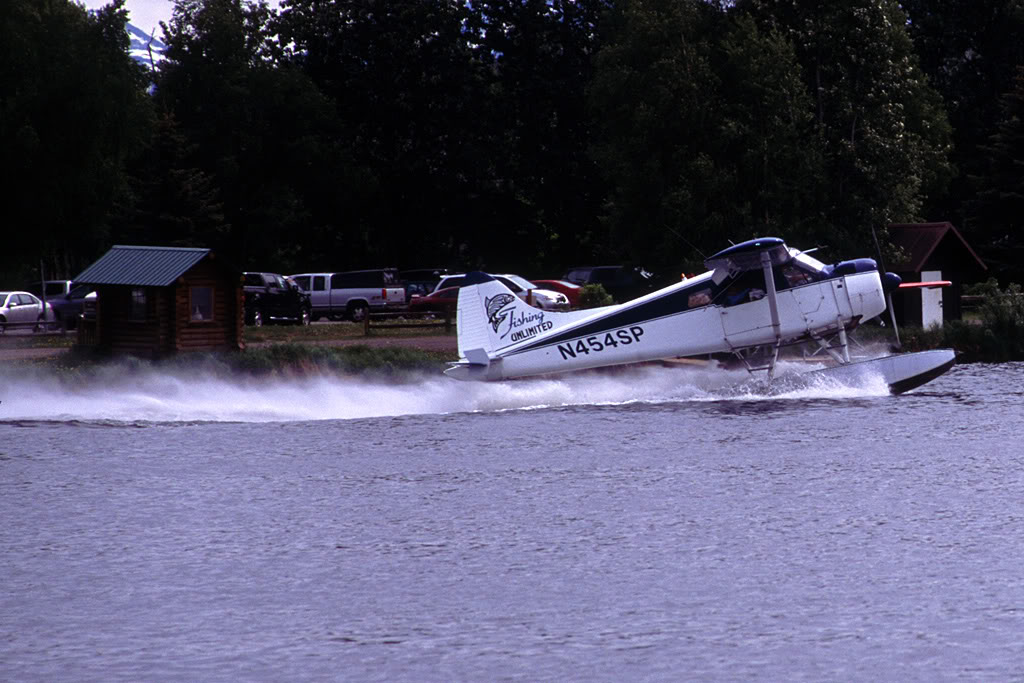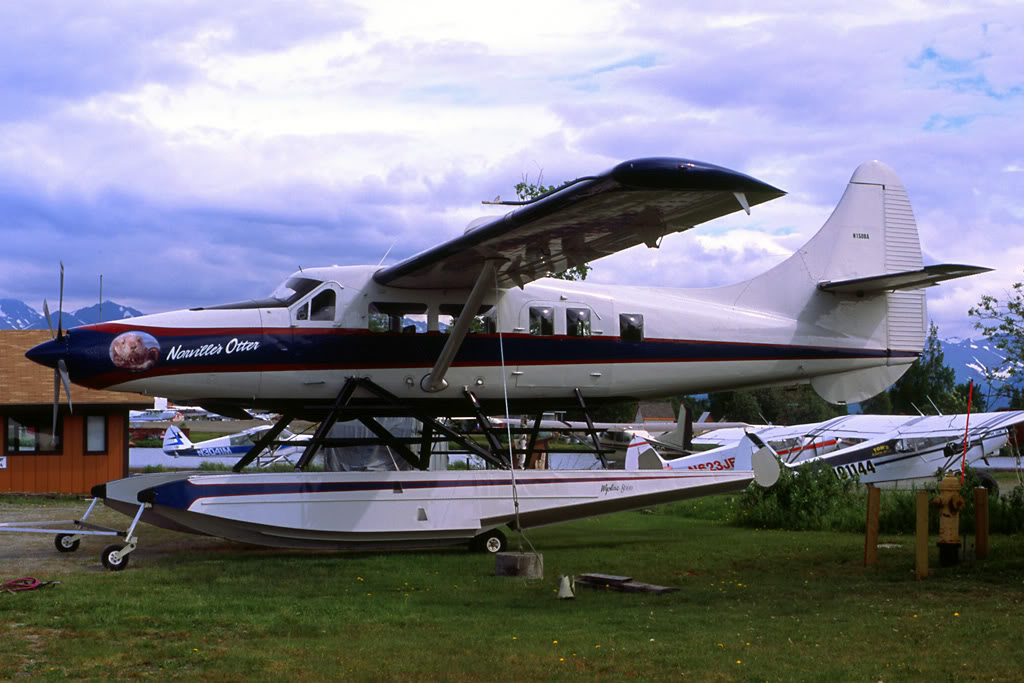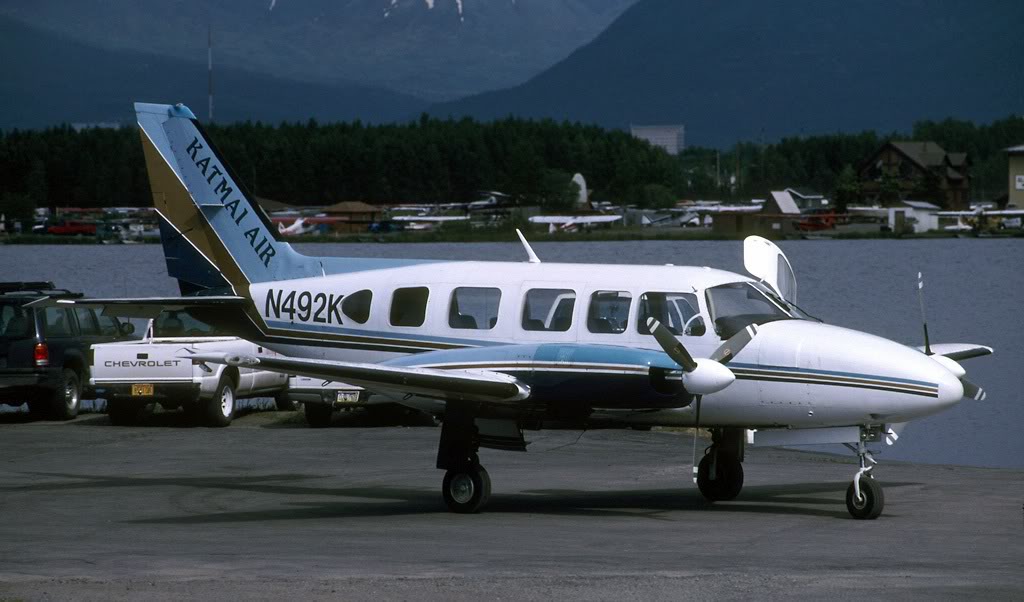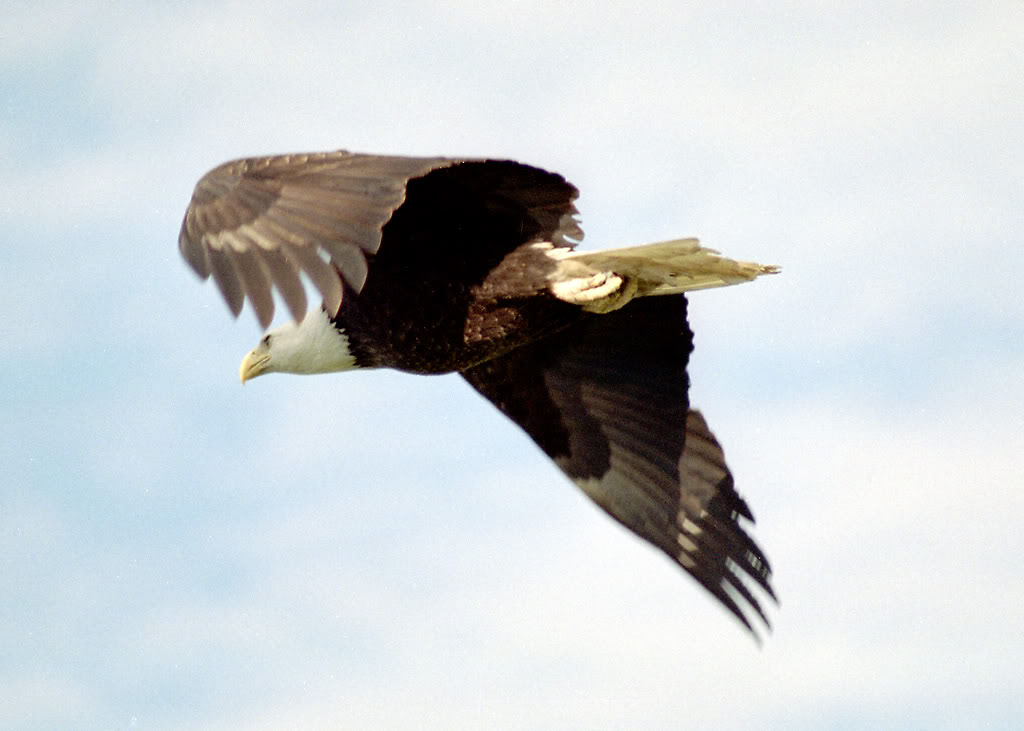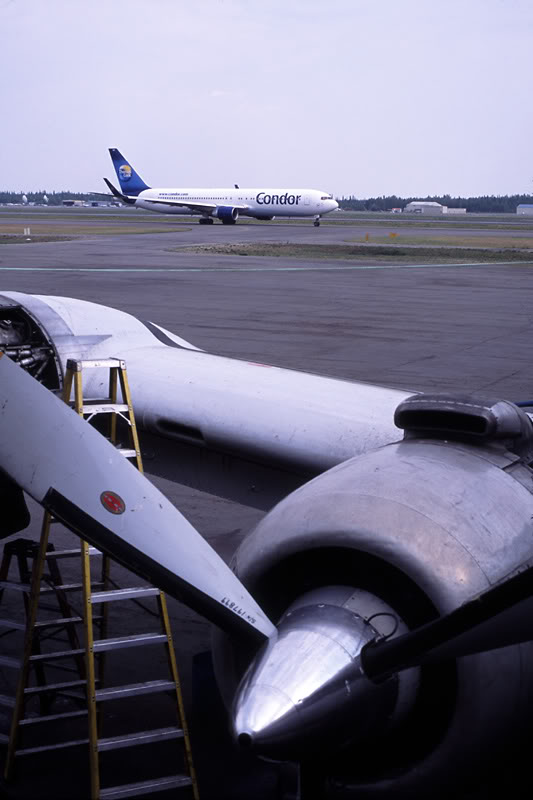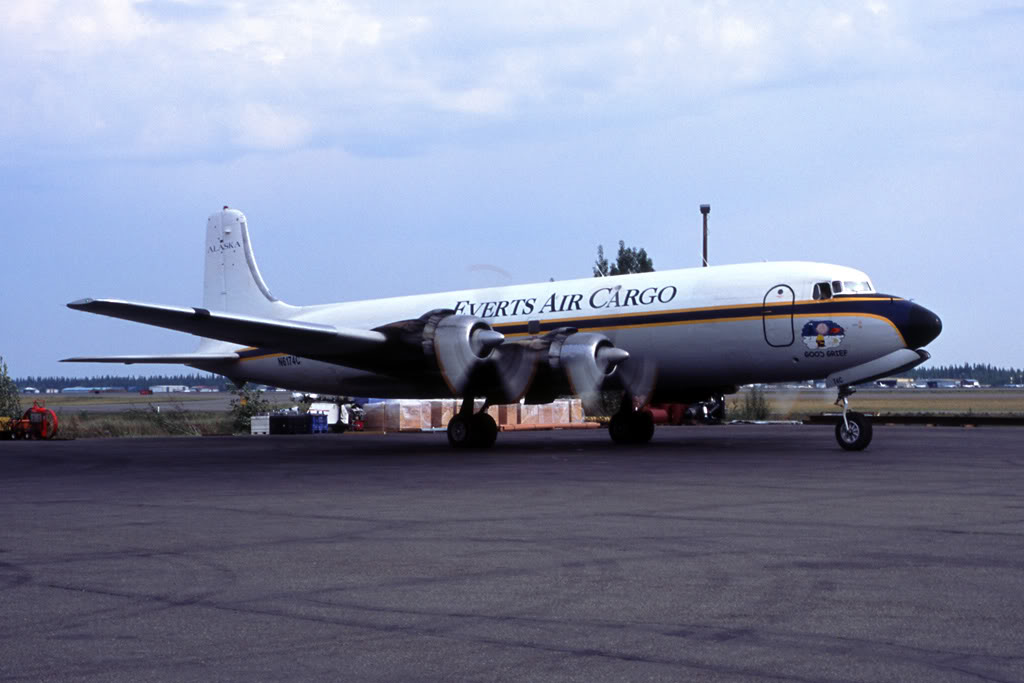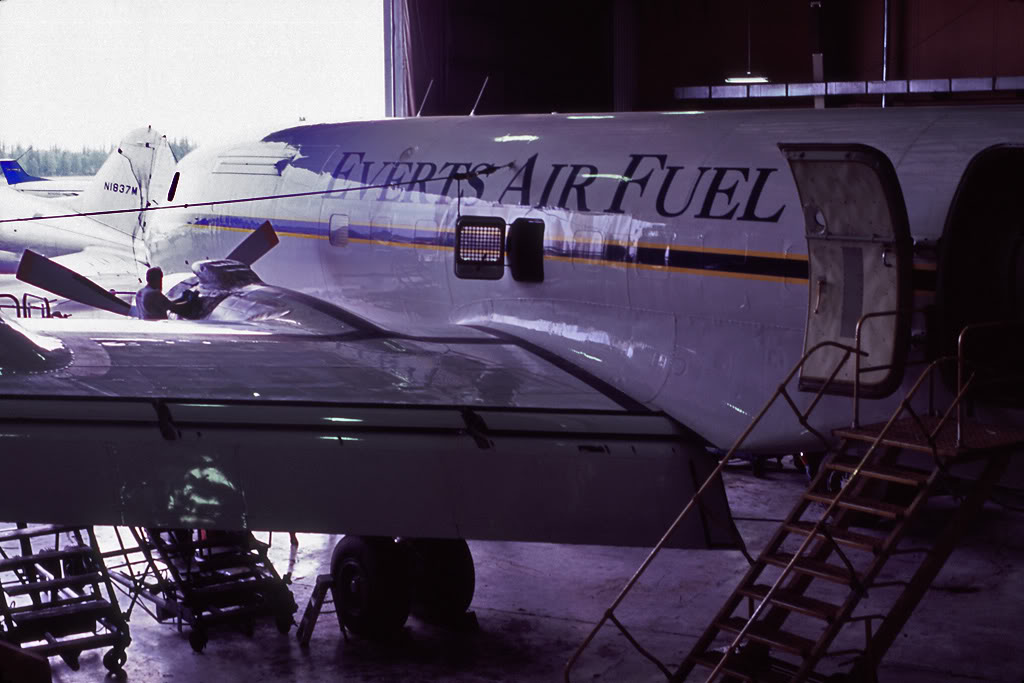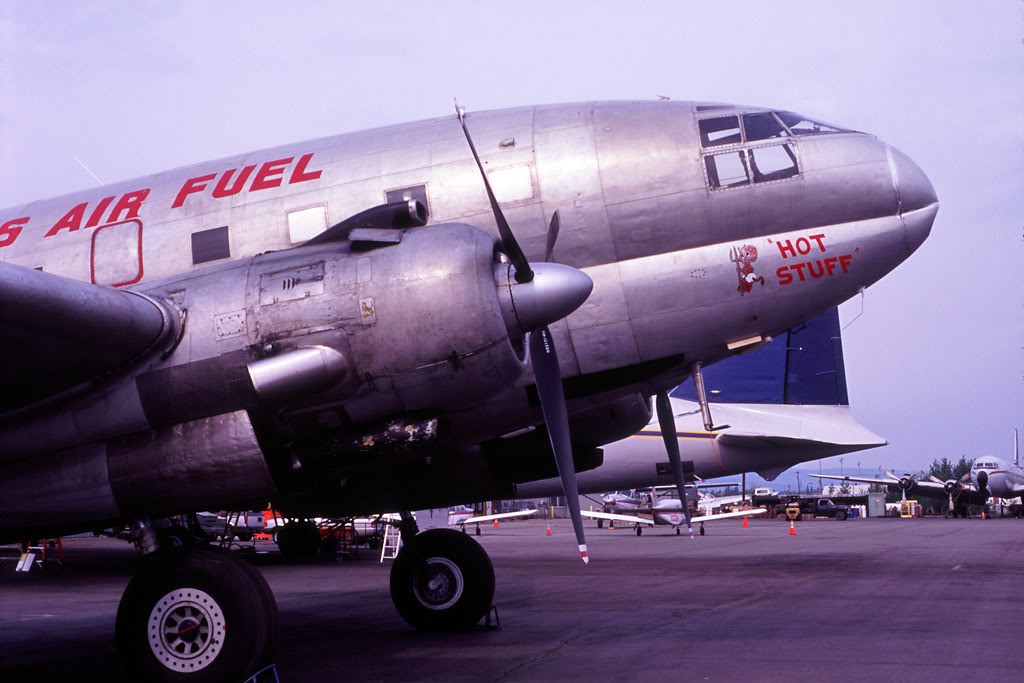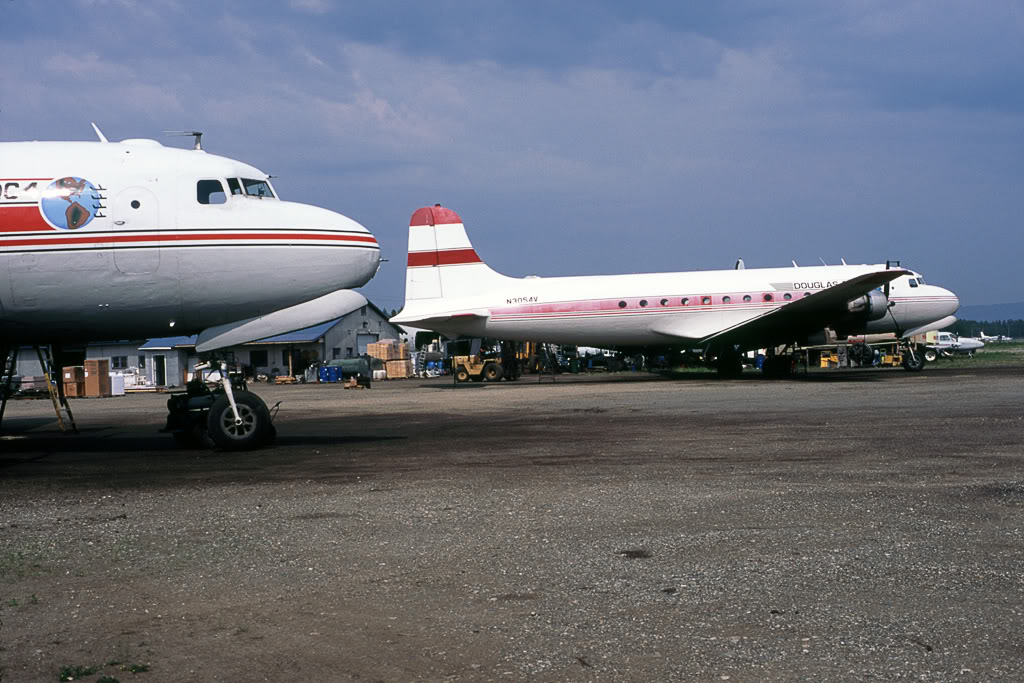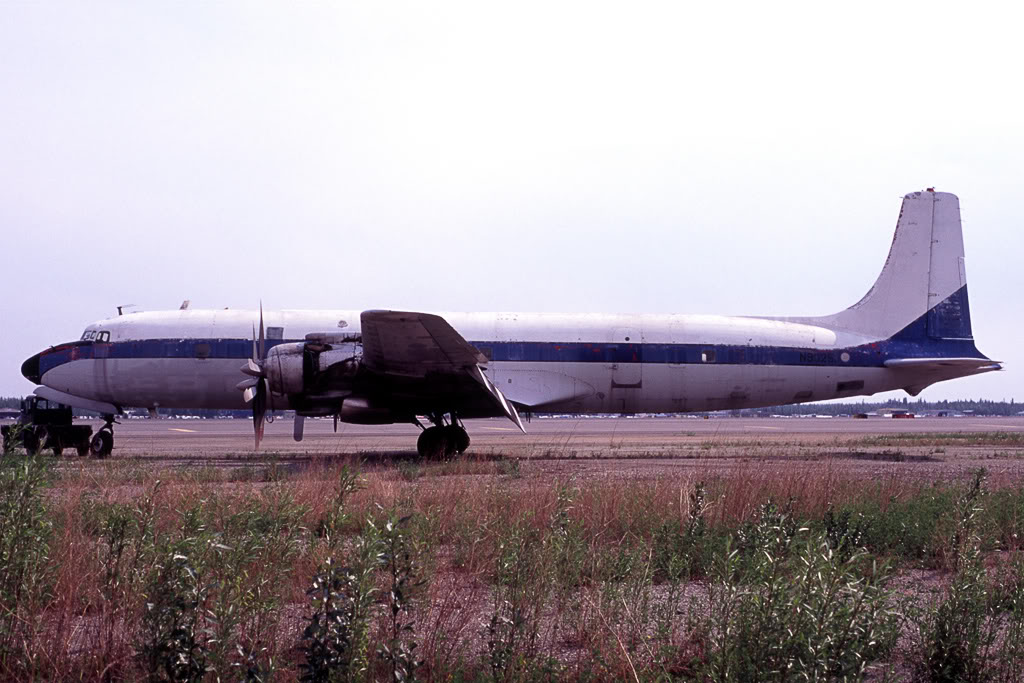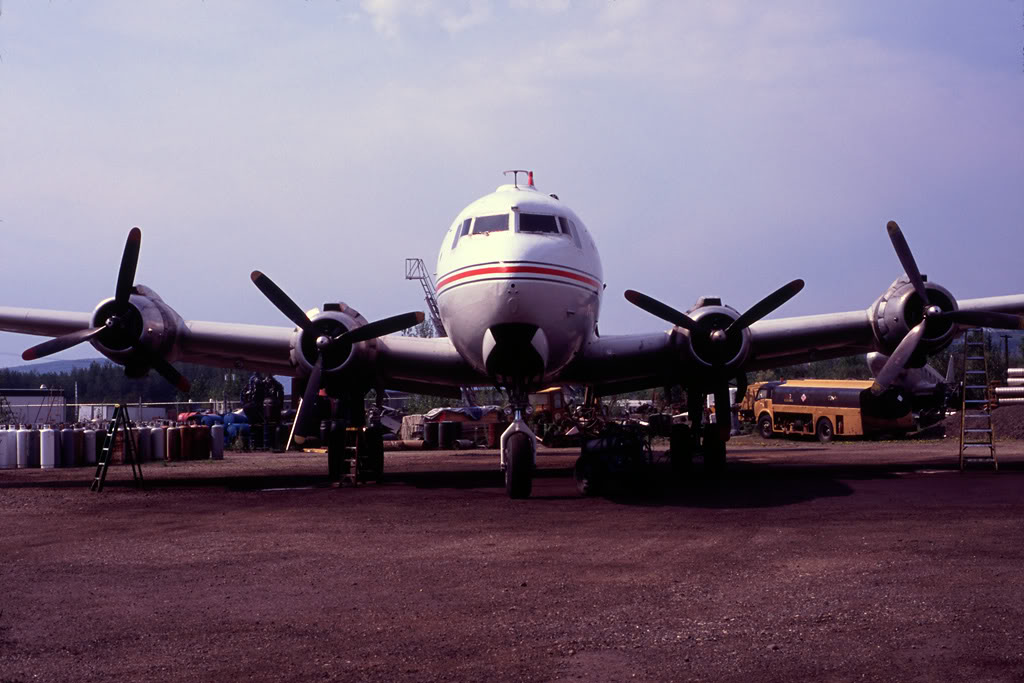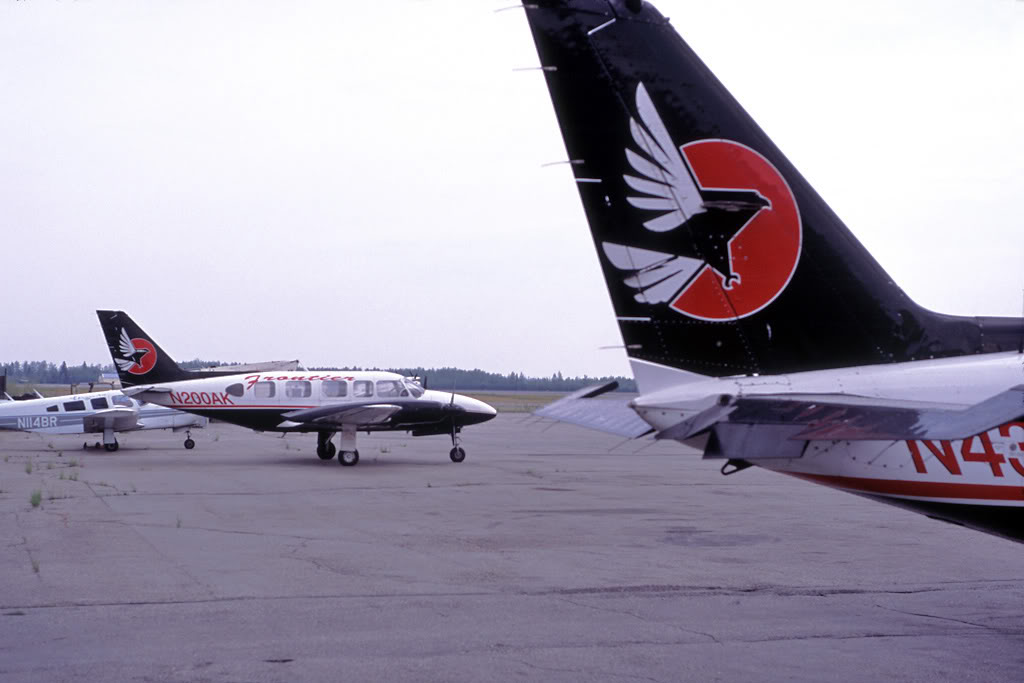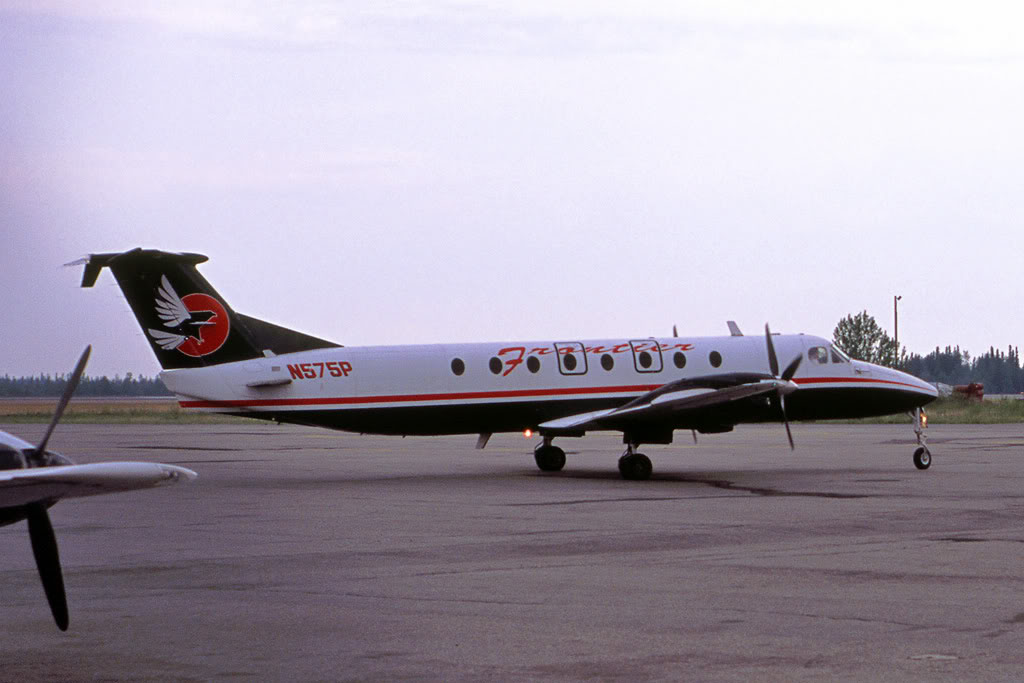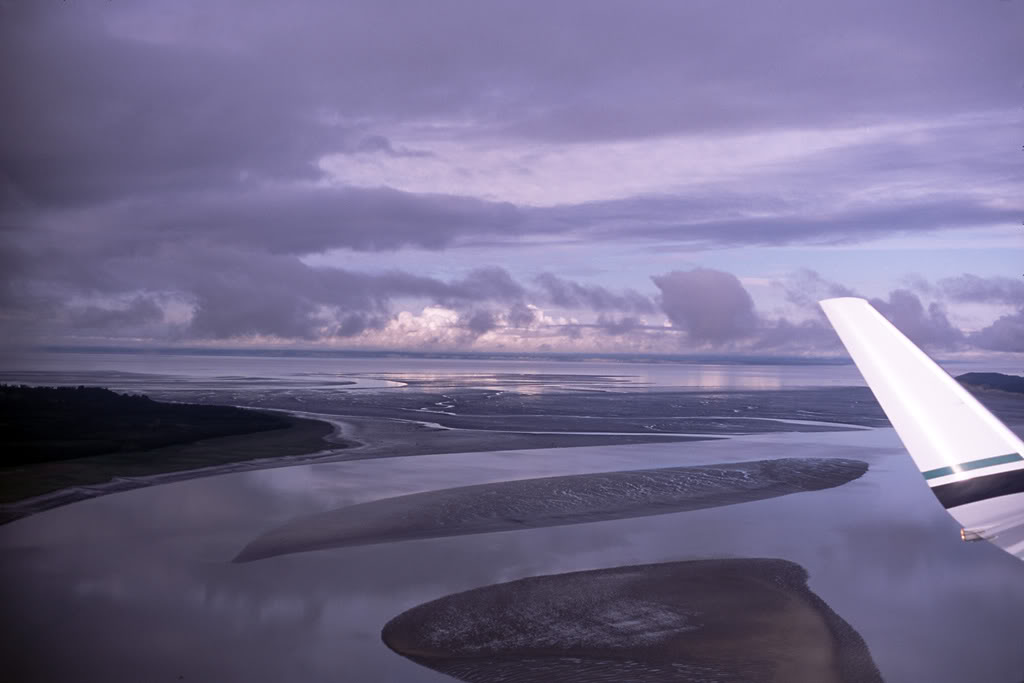Aircraft in Alaska
A
look at the Air Transport Industry in the Last Frontier
By
TOM HILDRETH
Because of its size and
geographic location, Alaska is more dependant on the air transport industry to
supply daily essentials than any other state. With many population centers
lacking surface connection with other parts of the state, the transportation of
freight, fuel, and passengers is most often accomplished by aircraft. I have
been told that at many airports within the state, the heavy loads presently delivered
on gravel runways can best be accomplished by the large piston
engine ex-airliners from the 1940s and 1950s. Types such as the renowned Douglas
DC-6 still roar into the air at Anchorage, Fairbanks and Kenai as they depart on
freight runs to outlying towns and sites, often hundreds of miles distant.
The Ted Stevens Anchorage International Airport (ANC) has become one of the world's busiest
airfreight facilities. A convenient refueling stop for freighters from Asia on their
eastbound runs, few airports in the United States can boast of a considerable rush hour
that consists mainly of Jumbo jets in many different liveries. The arrivals are concentrated
in the early-to-mid morning time slot, and the departures really start cranking in the mid-to-late
afternoon.
What follows is a brief and incomplete look at the aircraft of Alaaka's Air Transport
Industry as seen in June, 2010. My thanks to the helpful people at Brooks Fuels
and Everts Air Fuels for their cooperation.
|
Cathay Pacific Boeing 747 just prior to rotation on ANC's runway #32 on a cloudy day not unusual for Anchorage. |
| |
|
Fedex and UPS have a truly huge presence at ANC, their two facilities here are larger than many commercial airports in the United States. This is N850FD, a new Boeing 777-FS2 taxying in after a morning arrival |
| |
|
One of the more common ways to get to Alaska from the Lower 48 is by Alaska Airlines Boeing 737. Here is one departing on runway #32 |
| |
|
Desert Air's N44587, msn 12857, ex US Army 42-92995, was built by Douglas at Oklahoma City and delivered to the Army on 27 Mar 1944, and photographed in the morning taxying for takeoff on one of ANC's parallel 07 runways |
| |
|
With cloud cover hiding the peaks of the distant mountains, TransNorthern Aviation's (TNV) N28TN is a Super DC-3, originally delivered to the US Navy as an R4D-5 on 8 Sep 1943 |
| |
|
World Airways McDonnel_Douglas MD-11F N276WA taking off from ANC's Rwy #32 in the afternoon. Many of World's US government contract flights have operated under the callsign "Reach", and from July 1st, 2010, are expected to be heard using the callsign "Camber". |
| |
|
Lynden Air Cargo operates the civil Lockheed L.382 from their facility at ANC. This is L.3382G N404LC |
| |
|
Departing ANC's runway #32, N251CE goes to work for Everts Air Cargo. This is ex-USAF C-118A Loadmaster 53-3241 |
| |
|
Boeing 767-34AF N 311UP taxies back to the UPS ramp at ANC after a morning arrival |
| |
|
Polar's Boeing B.747-46NF msn 30809 N451PA is seen after a morning arrival |
| |
|
MD-10-30F N316FE departing ANC, June 2010 |
| |
Lake Hood Seaplane Base (PALH). The largest seaplane base
in the world, Lake Hood SBP (symbol LHD/PALH) is located adjacent to Anchorage International airport. According to internet sources, there are several
water runways here, and the seperate Lake Hood Strip (Z41) gravel runway 13/31 is 2200 ft in length. I was left with the impression that there were about
500 aircraft present on gravel and in the water.
|
Morning shot of Regal Air's Cessna U206G N1779R as it taxies for takeoff |
| |
|
Rust have a sizeable fleet of aircraft at PALH, here we see Cessna U206G N4891Z |
| |
|
Evening approaches at Lake Hood |
| |
|
The DeHavilland Canada DHC-2 Beaver is a favorite among aviation enthusiasts, this is msn 1193 N454SP, one of about two dozen I photographed at Lake Hood during June |
| |
|
Larger products from DeHavilland Canada are not difficult to find at Lake Hood. This is DHC-3 Otter N150BA |
| |
|
Grumman G-44 Widgeon N91040 departing the Lake Hood strip after dropping off two pax |
| |
|
PA-31 Navajo N492K of Katmai Air at Lake Hood |
| |
|
While photographing morning departures from Lake Hood SPB, a raucous noise from a tree behind me grabbed my attention. I looked to see this eagle and a companion launching from a branch. I grabbed a camera out of the bag, quick focused down from infinity, and was fortunate to grab this 200mm shot @ f2.8 |
| |
My introduction to Alaska began at Fairbanks. As the Air Alaska 737 rolled out on runway 2L, I saw many old Douglas airframes
through the window. To my right I could see there was a seaplane base with a water runway parallel to the one I was on. Here is a look through my lens at what I saw in Fairbanks over a period of several days
|
The old and the new at Fairbanks. |
| |
|
Music! All I could hear was sweet music |
| |
|
DC-6 Maintenance at Everts Air Cargo |
| |
|
Everts Air Fuels operates this Curtiss C-46F N1837M "Hot Stuff", photographed at Fairbanks |
| |
|
Over at Brooks Fuel, DC-4s are still at work in a c/s that remind me very much of the Douglas Aircraft Company |
| |
|
DC-7 N90251 msn 45367 Brooks Fuel, at FAI, AK 3 June 2010. I'm told she hasn't flown in a dozen years. Interesting to contemplate if she did ever fly again, it would be possible at FAI to have a formation flyover of a DC-4 (R-2000), a DC-6 (R-2800), and a DC-7 (R-3350). A full archestra, for sure! |
| |
|
Back to earth, here's shot of a DC-4 much more likely to take to the air within a day or two |
| |
|
Of course, other more common aircraft are busy at work at Fairbanks, such as this Piper PA-31 N200AK of operator Frontier at FAI |
| |
|
Another from the Frontier stable, this time Beech 1900C, N575P |
| |
|
When the vacation was over, it was time to board an Alaska Airlines 737 and head out over the shallows of Cook Inlet and head southeast to Chicago and beyond. |
| |
